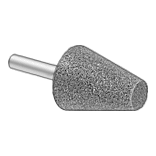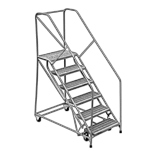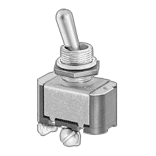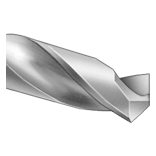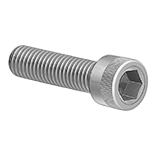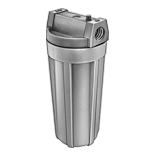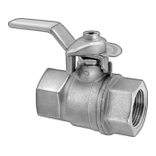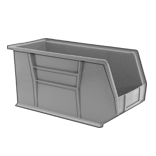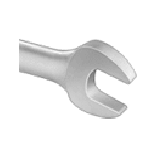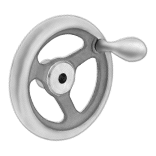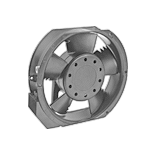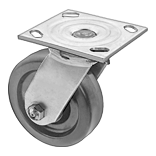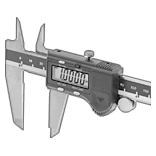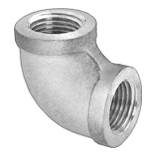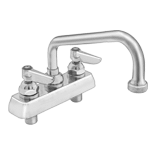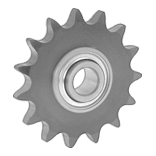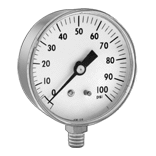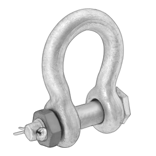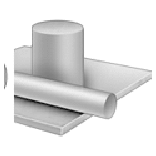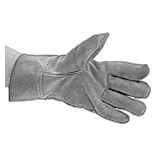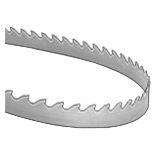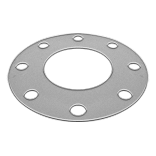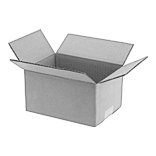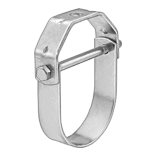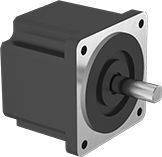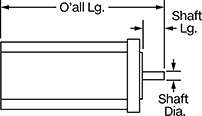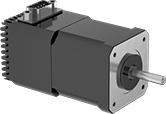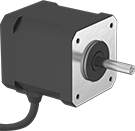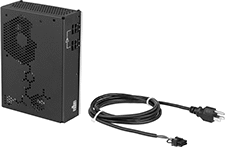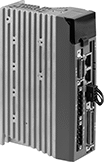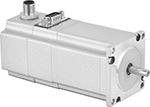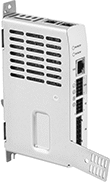Filter by
Maximum Holding Torque
Motor Frame Size
Maximum Rotation Speed
Thrust Load Capacity
Mounting Position
Body Shape
Component
Overall Length
Direction of Operation
Number of Shafts
Maximum Torque
Face Shape
DFARS Specialty Metals
Export Control Classification Number (ECCN)
Radial Load Capacity
Stepper Motors
Motors
Overall | Shaft | Temp. Range, ° F | |||||||||||||||||||||||||||||||||||||||||||||||||||||||||||||||||||||||||||||||||||||||||||||||||
|---|---|---|---|---|---|---|---|---|---|---|---|---|---|---|---|---|---|---|---|---|---|---|---|---|---|---|---|---|---|---|---|---|---|---|---|---|---|---|---|---|---|---|---|---|---|---|---|---|---|---|---|---|---|---|---|---|---|---|---|---|---|---|---|---|---|---|---|---|---|---|---|---|---|---|---|---|---|---|---|---|---|---|---|---|---|---|---|---|---|---|---|---|---|---|---|---|---|---|---|
Max. Holding Torque, in·ozf | Max. Rotation Speed, rpm | Max. Current per Phase, amp | Full Step Increment | Stepper Motor Polarity | No. of Wire Leads | Lg. | Wd. | Ht. | Dia. | Lg. | Ctr.-to-Base Lg. | Type | No. of Shafts | Min. | Max. | Each | |||||||||||||||||||||||||||||||||||||||||||||||||||||||||||||||||||||||||||||||||||
Square Body | |||||||||||||||||||||||||||||||||||||||||||||||||||||||||||||||||||||||||||||||||||||||||||||||||||
NEMA 34 Frame Size | |||||||||||||||||||||||||||||||||||||||||||||||||||||||||||||||||||||||||||||||||||||||||||||||||||
| 362 | 750 | 6.3 | 1.8° | Bipolar | 8 | 4.1" | 3.4" | 3.4" | 1/2" | 1 3/8" | 1.7" | D-Profile | 1 | 0 | 120 | 00000000 | 0000000 | ||||||||||||||||||||||||||||||||||||||||||||||||||||||||||||||||||||||||||||||||||
| 467 | 2,700 | 7 | 1.8° | Bipolar | 8 | 3.8" | 3.4" | 3.4" | 1/2" | 1 1/4" | 1.69" | Keyed | 1 | 0 | 120 | 00000000 | 000000 | ||||||||||||||||||||||||||||||||||||||||||||||||||||||||||||||||||||||||||||||||||
| 470 | 4,000 | 4.2 | 1.8° | Bipolar | 4 | 4.1" | 3.4" | 3.4" | 1/2" | 1 1/2" | 1.7" | D-Profile | 1 | 0 | 120 | 0000000 | 000000 | ||||||||||||||||||||||||||||||||||||||||||||||||||||||||||||||||||||||||||||||||||
| 595 | 675 | 6.3 | 1.8° | Bipolar | 8 | 5.3" | 3.4" | 3.4" | 1/2" | 1 3/8" | 1.7" | D-Profile | 1 | 0 | 120 | 00000000 | 000000 | ||||||||||||||||||||||||||||||||||||||||||||||||||||||||||||||||||||||||||||||||||
| 637 | 2,700 | 8.6 | 1.8° | Bipolar | 8 | 4.4" | 3.4" | 3.4" | 1/2" | 1 1/4" | 1.69" | Keyed | 1 | 0 | 120 | 00000000 | 000000 | ||||||||||||||||||||||||||||||||||||||||||||||||||||||||||||||||||||||||||||||||||
| 870 | 750 | 4.2 | 1.8° | Bipolar | 4 | 5.3" | 3.4" | 3.4" | 1/2" | 1 1/2" | 1.7" | D-Profile | 1 | 0 | 120 | 0000000 | 000000 | ||||||||||||||||||||||||||||||||||||||||||||||||||||||||||||||||||||||||||||||||||
| 1,140 | 300 | 6.3 | 1.8° | Bipolar | 8 | 6.5" | 3.4" | 3.4" | 1/2" | 1 3/8" | 1.7" | D-Profile | 1 | 0 | 120 | 00000000 | 000000 | ||||||||||||||||||||||||||||||||||||||||||||||||||||||||||||||||||||||||||||||||||
| 1,200 | 2,700 | 9.8 | 1.8° | Bipolar | 8 | 5.9" | 3.4" | 3.4" | 1/2" | 1 1/4" | 1.69" | Keyed | 1 | 0 | 120 | 00000000 | 000000 | ||||||||||||||||||||||||||||||||||||||||||||||||||||||||||||||||||||||||||||||||||
| 1,435 | 250 | 4.83 | 1.8° | Bipolar | 4 | 6.5" | 3.4" | 3.4" | 1/2" | 1 1/2" | 1.7" | D-Profile | 1 | 0 | 120 | 0000000 | 000000 | ||||||||||||||||||||||||||||||||||||||||||||||||||||||||||||||||||||||||||||||||||
| 1,700 | 1,500 | 10 | 1.8° | Bipolar | 8 | 7.4" | 3.4" | 3.4" | 5/8" | 1 1/4" | 1.69" | Keyed | 1 | 0 | 120 | 00000000 | 000000 | ||||||||||||||||||||||||||||||||||||||||||||||||||||||||||||||||||||||||||||||||||
| 2,124.1 | 360 | 5 | 1.8° | Bipolar | 4 | 7.4" | 3.4" | 3.4" | 5/8" | 1" | 1.7" | Keyed | 1 | 0 | 120 | 00000000 | 000000 | ||||||||||||||||||||||||||||||||||||||||||||||||||||||||||||||||||||||||||||||||||
Motor/Drives
Current per Phase, amp | Overall | Shaft | Temp. Range, ° F | ||||||||||||||||||||||||||||||||||||||||||||||||||||||||||||||||||||||||||||||||||||||||||||||||
|---|---|---|---|---|---|---|---|---|---|---|---|---|---|---|---|---|---|---|---|---|---|---|---|---|---|---|---|---|---|---|---|---|---|---|---|---|---|---|---|---|---|---|---|---|---|---|---|---|---|---|---|---|---|---|---|---|---|---|---|---|---|---|---|---|---|---|---|---|---|---|---|---|---|---|---|---|---|---|---|---|---|---|---|---|---|---|---|---|---|---|---|---|---|---|---|---|---|---|---|
Max. Holding Torque, in·ozf | Max. Rotation Speed, rpm | Min. | Max. | Voltage, V DC | Full Step Increment | Step Resolution | Stepper Motor Polarity | Lg. | Wd. | Ht. | Dia. | Lg. | Ctr.-to-Base Lg. | Type | Min. | Max. | Each | ||||||||||||||||||||||||||||||||||||||||||||||||||||||||||||||||||||||||||||||||||
Square Body | |||||||||||||||||||||||||||||||||||||||||||||||||||||||||||||||||||||||||||||||||||||||||||||||||||
NEMA 34 Frame Size | |||||||||||||||||||||||||||||||||||||||||||||||||||||||||||||||||||||||||||||||||||||||||||||||||||
| 637 | 1,500 | 0.43 | 4.3 | 20 to 80 | 1.8° | 1 | Bipolar | 6.6" | 3.5" | 3.5" | 1/2" | 1 3/16" | 1.76" | Keyed | 0 | 120 | 00000000 | 0000000 | |||||||||||||||||||||||||||||||||||||||||||||||||||||||||||||||||||||||||||||||||
| 1,200 | 3,000 | 0.49 | 4.9 | 20 to 80 | 1.8° | 1 | Bipolar | 8.1" | 3.5" | 3.5" | 1/2" | 1 3/16" | 1.76" | Keyed | 0 | 120 | 00000000 | 000000 | |||||||||||||||||||||||||||||||||||||||||||||||||||||||||||||||||||||||||||||||||
| 1,700 | 1,800 | 0.5 | 5 | 20 to 80 | 1.8° | 1 | Bipolar | 9.6" | 3.5" | 3.5" | 5/8" | 1 3/16" | 1.76" | Keyed | 0 | 120 | 00000000 | 000000 | |||||||||||||||||||||||||||||||||||||||||||||||||||||||||||||||||||||||||||||||||
Stepper Gearmotors
 |
Square Body |
Overall | Shaft | Keyway, mm | |||||||||||||||||||||||||||||||||||||||||||||||||||||||||||||||||||||||||||||||||||||||||||||||||
|---|---|---|---|---|---|---|---|---|---|---|---|---|---|---|---|---|---|---|---|---|---|---|---|---|---|---|---|---|---|---|---|---|---|---|---|---|---|---|---|---|---|---|---|---|---|---|---|---|---|---|---|---|---|---|---|---|---|---|---|---|---|---|---|---|---|---|---|---|---|---|---|---|---|---|---|---|---|---|---|---|---|---|---|---|---|---|---|---|---|---|---|---|---|---|---|---|---|---|---|
Max. Holding Torque, in·ozf | Max. Rotation Speed, rpm | Max. Current per Phase, amp | Full Step Increment | No. of Wire Leads | Lg. | Wd. | Ht. | Dia., mm | Lg., mm | Ctr.-to-Base Lg. | Type | Key Included | Lg. | Wd. | Dp. | Temp. Range, ° F | Each | ||||||||||||||||||||||||||||||||||||||||||||||||||||||||||||||||||||||||||||||||||
Square Body | |||||||||||||||||||||||||||||||||||||||||||||||||||||||||||||||||||||||||||||||||||||||||||||||||||
NEMA 34 Frame Size | |||||||||||||||||||||||||||||||||||||||||||||||||||||||||||||||||||||||||||||||||||||||||||||||||||
| 3,058 | 400 | 3.5 | 0.36° | 4 | 8.5" | 3.5" | 3.5" | 22 | 37.5 | 1.77" | Keyed | No | 30 | 6 | 3.5 | 0 to 120 | 0000000 | 0000000 | |||||||||||||||||||||||||||||||||||||||||||||||||||||||||||||||||||||||||||||||||
| 6,117 | 200 | 3.5 | 0.18° | 4 | 8.5" | 3.5" | 3.5" | 22 | 37.5 | 1.77" | Keyed | No | 30 | 6 | 3.5 | 0 to 120 | 0000000 | 000000 | |||||||||||||||||||||||||||||||||||||||||||||||||||||||||||||||||||||||||||||||||
| 11,555 | 100 | 3.5 | 0.09° | 4 | 8.5" | 3.5" | 3.5" | 22 | 37.5 | 1.77" | Keyed | No | 30 | 6 | 3.5 | 0 to 120 | 0000000 | 000000 | |||||||||||||||||||||||||||||||||||||||||||||||||||||||||||||||||||||||||||||||||
| 28,888 | 40 | 3.5 | 0.036° | 4 | 8.5" | 3.5" | 3.5" | 22 | 37.5 | 1.77" | Keyed | No | 30 | 6 | 3.5 | 0 to 120 | 0000000 | 000000 | |||||||||||||||||||||||||||||||||||||||||||||||||||||||||||||||||||||||||||||||||
Stepper Motors with Integrated Motion Control
Current per Phase, amp | Overall | Shaft | Temp. Range, ° F | ||||||||||||||||||||||||||||||||||||||||||||||||||||||||||||||||||||||||||||||||||||||||||||||||
|---|---|---|---|---|---|---|---|---|---|---|---|---|---|---|---|---|---|---|---|---|---|---|---|---|---|---|---|---|---|---|---|---|---|---|---|---|---|---|---|---|---|---|---|---|---|---|---|---|---|---|---|---|---|---|---|---|---|---|---|---|---|---|---|---|---|---|---|---|---|---|---|---|---|---|---|---|---|---|---|---|---|---|---|---|---|---|---|---|---|---|---|---|---|---|---|---|---|---|---|
Max. Holding Torque, in·ozf | Max. Rotation Speed, rpm | Min. | Max. | Voltage, V DC | Full Step Increment | Step Resolution | No. of Inputs/Outputs | Lg. | Wd. | Ht. | Dia. | Lg. | Ctr.-to-Base Lg. | Type | Min. | Max. | Each | ||||||||||||||||||||||||||||||||||||||||||||||||||||||||||||||||||||||||||||||||||
Motor/Controller/Drives | |||||||||||||||||||||||||||||||||||||||||||||||||||||||||||||||||||||||||||||||||||||||||||||||||||
NEMA 34 Frame Size | |||||||||||||||||||||||||||||||||||||||||||||||||||||||||||||||||||||||||||||||||||||||||||||||||||
| 637 | 1,500 | 0.43 | 4.3 | 20 to 80 | 1.8° | 1/10 | 2 Digital-Inputs, 1 Digital-Output | 6.6" | 3.5" | 3.5" | 1/2" | 1 1/4" | 1.76" | Keyed | 0 | 120 | 00000000 | 0000000 | |||||||||||||||||||||||||||||||||||||||||||||||||||||||||||||||||||||||||||||||||
| 1,200 | 3,000 | 0.49 | 4.9 | 20 to 80 | 1.8° | 1/10 | 2 Digital-Inputs, 1 Digital-Output | 8.2" | 3.5" | 3.5" | 1/2" | 1 1/4" | 1.76" | Keyed | 0 | 120 | 00000000 | 000000 | |||||||||||||||||||||||||||||||||||||||||||||||||||||||||||||||||||||||||||||||||
| 1,700 | 1,800 | 0.5 | 5 | 20 to 80 | 1.8° | 1/10 | 2 Digital-Inputs, 1 Digital-Output | 9.6" | 3.5" | 3.5" | 5/8" | 1 1/4" | 1.76" | Keyed | 0 | 120 | 00000000 | 000000 | |||||||||||||||||||||||||||||||||||||||||||||||||||||||||||||||||||||||||||||||||
Wet-Environment Stepper Motors
Motors
Overall | Shaft | Temp. Range, ° F | |||||||||||||||||||||||||||||||||||||||||||||||||||||||||||||||||||||||||||||||||||||||||||||||||
|---|---|---|---|---|---|---|---|---|---|---|---|---|---|---|---|---|---|---|---|---|---|---|---|---|---|---|---|---|---|---|---|---|---|---|---|---|---|---|---|---|---|---|---|---|---|---|---|---|---|---|---|---|---|---|---|---|---|---|---|---|---|---|---|---|---|---|---|---|---|---|---|---|---|---|---|---|---|---|---|---|---|---|---|---|---|---|---|---|---|---|---|---|---|---|---|---|---|---|---|
Max. Holding Torque, in·ozf | Max. Rotation Speed, rpm | Max. Current per Phase, amp | Full Step Increment | Stepper Motor Polarity | No. of Wire Leads | Lg. | Wd. | Ht. | Dia. | Lg. | Ctr.-to-Base Lg. | Type | No. of Shafts | Min. | Max. | Enclosure Rating | Each | ||||||||||||||||||||||||||||||||||||||||||||||||||||||||||||||||||||||||||||||||||
Square Body | |||||||||||||||||||||||||||||||||||||||||||||||||||||||||||||||||||||||||||||||||||||||||||||||||||
NEMA 34 Frame Size | |||||||||||||||||||||||||||||||||||||||||||||||||||||||||||||||||||||||||||||||||||||||||||||||||||
| 470 | 4,000 | 4.2 | 1.8° | Bipolar | 4 | 4.1" | 3.4" | 3.4" | 1/2" | 1 1/2" | 1.7" | D-Profile | 1 | 0 | 120 | IP65 | 00000000 | 0000000 | |||||||||||||||||||||||||||||||||||||||||||||||||||||||||||||||||||||||||||||||||
| 910 | 410 | 2.8 | 1.8° | Bipolar | 4 | 5.4" | 3.4" | 3.4" | 1/2" | 1 3/8" | 1.7" | D-Profile | 1 | 0 | 120 | IP65 | 0000000 | 000000 | |||||||||||||||||||||||||||||||||||||||||||||||||||||||||||||||||||||||||||||||||
| 1,435 | 250 | 4.83 | 1.8° | Bipolar | 4 | 6.4" | 3.4" | 3.4" | 1/2" | 1 1/2" | 1.7" | D-Profile | 1 | 0 | 120 | IP65 | 00000000 | 000000 | |||||||||||||||||||||||||||||||||||||||||||||||||||||||||||||||||||||||||||||||||
Stepper Servomotors with Integrated Drive
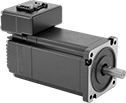 |
Overall | Shaft | No. of Inputs/Outputs | |||||||||||||||||||||||||||||||||||||||||||||||||||||||||||||||||||||||||||||||||||||||||||||||||
|---|---|---|---|---|---|---|---|---|---|---|---|---|---|---|---|---|---|---|---|---|---|---|---|---|---|---|---|---|---|---|---|---|---|---|---|---|---|---|---|---|---|---|---|---|---|---|---|---|---|---|---|---|---|---|---|---|---|---|---|---|---|---|---|---|---|---|---|---|---|---|---|---|---|---|---|---|---|---|---|---|---|---|---|---|---|---|---|---|---|---|---|---|---|---|---|---|---|---|---|
Max. Holding Torque, in·ozf | Max. Rotation Speed, rpm | Voltage, V DC | Current, amp | Step Resolution | Full Step Increment | Lg. | Wd. | Ht. | Dia., mm | Lg., mm | Ctr.-to-Base Lg. | Communication Protocol | Digital Inputs | Analog Inputs | Digital Outputs | Enclosure Rating | Each | ||||||||||||||||||||||||||||||||||||||||||||||||||||||||||||||||||||||||||||||||||
NEMA 34 Frame Size | |||||||||||||||||||||||||||||||||||||||||||||||||||||||||||||||||||||||||||||||||||||||||||||||||||
| 382 | 3,000 | 24 to 70 | 5.1 | 1 to 1/256 | 1.8° | 5.9" | 3.4" | 5" | 14 | 35 | 1.7" | Modbus RTU | 8 | 1 | 4 | IP20 | 0000000 | 0000000 | |||||||||||||||||||||||||||||||||||||||||||||||||||||||||||||||||||||||||||||||||
| 736 | 3,000 | 24 to 70 | 5.1 | 1 to 1/256 | 1.8° | 7" | 3.4" | 5" | 14 | 35 | 1.7" | Modbus RTU | 8 | 1 | 4 | IP20 | 0000000 | 000000 | |||||||||||||||||||||||||||||||||||||||||||||||||||||||||||||||||||||||||||||||||
| 949 | 3,000 | 24 to 70 | 5.1 | 1 to 1/256 | 1.8° | 8.2" | 3.4" | 5" | 14 | 35 | 1.7" | Modbus RTU | 8 | 1 | 4 | IP20 | 0000000 | 00000000 | |||||||||||||||||||||||||||||||||||||||||||||||||||||||||||||||||||||||||||||||||
| 1,161 | 3,000 | 48 to 70 | 5.2 | 1 to 1/256 | 1.8° | 9.4" | 3.4" | 5" | 14 | 35 | 1.7" | Modbus RTU | 8 | 1 | 4 | IP20 | 0000000 | 00000000 | |||||||||||||||||||||||||||||||||||||||||||||||||||||||||||||||||||||||||||||||||
DC Servomotors with Integrated Drive
Servomotors | Servomotor Input/Output Cords | Servomotor Power Cords | |||||||||||||||||||||||||||||||||||||||||||||||||||||||||||||||||||||||||||||||||||||||||||||||||
|---|---|---|---|---|---|---|---|---|---|---|---|---|---|---|---|---|---|---|---|---|---|---|---|---|---|---|---|---|---|---|---|---|---|---|---|---|---|---|---|---|---|---|---|---|---|---|---|---|---|---|---|---|---|---|---|---|---|---|---|---|---|---|---|---|---|---|---|---|---|---|---|---|---|---|---|---|---|---|---|---|---|---|---|---|---|---|---|---|---|---|---|---|---|---|---|---|---|---|---|
Overall | Shaft | ||||||||||||||||||||||||||||||||||||||||||||||||||||||||||||||||||||||||||||||||||||||||||||||||||
Max. Torque, in·lbf | Continuous Torque, in·lbf | Max. Rotation Speed, rpm | Wattage, W | Voltage, V DC | Lg. | Wd. | Ht. | Dia. | Lg. | No. of Counts per Rev. | Driver Control Mode | Enclosure Rating | Each | Each | Each | ||||||||||||||||||||||||||||||||||||||||||||||||||||||||||||||||||||||||||||||||||||
NEMA 34 Frame Size | |||||||||||||||||||||||||||||||||||||||||||||||||||||||||||||||||||||||||||||||||||||||||||||||||||
| 39.9 | 9.4 | 2,320 | 220 | 75 | 4.4" | 3.4" | 4.3" | 1/2" | 1 3/16" | 6,400 | Step and Direction | IP53 | 00000000 | 0000000 | 00000000 | 000000 | 00000000 | 000000 | |||||||||||||||||||||||||||||||||||||||||||||||||||||||||||||||||||||||||||||||||
| 68.4 | 18.1 | 1,410 | 227 | 75 | 5.1" | 3.4" | 4.3" | 1/2" | 1 3/16" | 6,400 | Step and Direction | IP53 | 00000000 | 000000 | 00000000 | 00000 | 00000000 | 00000 | |||||||||||||||||||||||||||||||||||||||||||||||||||||||||||||||||||||||||||||||||
| 87.3 | 24.5 | 1,130 | 267 | 75 | 5.9" | 3.4" | 4.3" | 1/2" | 1 3/16" | 6,400 | Step and Direction | IP53 | 00000000 | 000000 | 00000000 | 00000 | 00000000 | 00000 | |||||||||||||||||||||||||||||||||||||||||||||||||||||||||||||||||||||||||||||||||
| 115.3 | 30 | 840 | 280 | 75 | 6.6" | 3.4" | 4.3" | 1/2" | 1 3/16" | 6,400 | Step and Direction | IP53 | 00000000 | 000000 | 00000000 | 00000 | 00000000 | 00000 | |||||||||||||||||||||||||||||||||||||||||||||||||||||||||||||||||||||||||||||||||
DC Servomotors
Servomotors | Servomotor Encoder Cords | Servomotor Power Cords | |||||||||||||||||||||||||||||||||||||||||||||||||||||||||||||||||||||||||||||||||||||||||||||||||
|---|---|---|---|---|---|---|---|---|---|---|---|---|---|---|---|---|---|---|---|---|---|---|---|---|---|---|---|---|---|---|---|---|---|---|---|---|---|---|---|---|---|---|---|---|---|---|---|---|---|---|---|---|---|---|---|---|---|---|---|---|---|---|---|---|---|---|---|---|---|---|---|---|---|---|---|---|---|---|---|---|---|---|---|---|---|---|---|---|---|---|---|---|---|---|---|---|---|---|---|
Shaft | |||||||||||||||||||||||||||||||||||||||||||||||||||||||||||||||||||||||||||||||||||||||||||||||||||
Motor Frame Size | Max. Torque, in·lbf | Continuous Torque, in·lbf | Max. Rotation Speed, rpm | Current, amp | Max. Current, amp | Wattage, W | Voltage, V DC | Dia. | Lg. | No. of Counts per Rev. | Each | Each | Each | ||||||||||||||||||||||||||||||||||||||||||||||||||||||||||||||||||||||||||||||||||||||
Without Brake | |||||||||||||||||||||||||||||||||||||||||||||||||||||||||||||||||||||||||||||||||||||||||||||||||||
| NEMA 34 | 45 | 12.8 | 4,960 | 3.2 | 10.9 | 750 | 340 | 1/2" | 1.1" | 20,000 | 0000000 | 000000000 | 00000000 | 0000000 | 00000000 | 0000000 | |||||||||||||||||||||||||||||||||||||||||||||||||||||||||||||||||||||||||||||||||||
| NEMA 34 | 75.9 | 20.7 | 4,960 | 4.1 | 14.5 | 1,210 | 340 | 1/2" | 1.1" | 20,000 | 0000000 | 00000000 | 00000000 | 000000 | 00000000 | 000000 | |||||||||||||||||||||||||||||||||||||||||||||||||||||||||||||||||||||||||||||||||||
| NEMA 34 | 106.7 | 27.3 | 4,960 | 5.5 | 21.1 | 1,600 | 340 | 1/2" | 1.1" | 20,000 | 0000000 | 00000000 | 00000000 | 000000 | 00000000 | 000000 | |||||||||||||||||||||||||||||||||||||||||||||||||||||||||||||||||||||||||||||||||||
| NEMA 34 | 129.5 | 38.3 | 2,980 | 5.8 | 19.2 | 1,350 | 340 | 1/2" | 1.1" | 20,000 | 0000000 | 00000000 | 00000000 | 000000 | 00000000 | 000000 | |||||||||||||||||||||||||||||||||||||||||||||||||||||||||||||||||||||||||||||||||||
With Brake | |||||||||||||||||||||||||||||||||||||||||||||||||||||||||||||||||||||||||||||||||||||||||||||||||||
| NEMA 34 | 45 | 12.8 | 4,960 | 3.2 | 10.9 | 750 | 340 | 1/2" | 1.1" | 20,000 | 0000000 | 00000000 | 00000000 | 000000 | 00000000 | 000000 | |||||||||||||||||||||||||||||||||||||||||||||||||||||||||||||||||||||||||||||||||||
| NEMA 34 | 75.9 | 20.7 | 4,960 | 4.1 | 14.5 | 1,210 | 340 | 1/2" | 1.1" | 20,000 | 0000000 | 00000000 | 00000000 | 000000 | 00000000 | 000000 | |||||||||||||||||||||||||||||||||||||||||||||||||||||||||||||||||||||||||||||||||||
| NEMA 34 | 106.7 | 27.3 | 4,960 | 5.5 | 21.1 | 1,600 | 340 | 1/2" | 1.1" | 20,000 | 0000000 | 00000000 | 00000000 | 000000 | 00000000 | 000000 | |||||||||||||||||||||||||||||||||||||||||||||||||||||||||||||||||||||||||||||||||||
| NEMA 34 | 129.5 | 38.3 | 2,980 | 5.8 | 19.2 | 1,350 | 340 | 1/2" | 1.1" | 20,000 | 0000000 | 00000000 | 00000000 | 000000 | 00000000 | 000000 | |||||||||||||||||||||||||||||||||||||||||||||||||||||||||||||||||||||||||||||||||||
Stepper Servomotors
Servomotors | Servomotor Encoder Cords | Servomotor Power Cords | |||||||||||||||||||||||||||||||||||||||||||||||||||||||||||||||||||||||||||||||||||||||||||||||||
|---|---|---|---|---|---|---|---|---|---|---|---|---|---|---|---|---|---|---|---|---|---|---|---|---|---|---|---|---|---|---|---|---|---|---|---|---|---|---|---|---|---|---|---|---|---|---|---|---|---|---|---|---|---|---|---|---|---|---|---|---|---|---|---|---|---|---|---|---|---|---|---|---|---|---|---|---|---|---|---|---|---|---|---|---|---|---|---|---|---|---|---|---|---|---|---|---|---|---|---|
Overall | Shaft | ||||||||||||||||||||||||||||||||||||||||||||||||||||||||||||||||||||||||||||||||||||||||||||||||||
Max. Holding Torque, in·ozf | Max. Rotation Speed, rpm | Voltage, V DC | Full Step Increment | Lg. | Wd. | Ht. | Dia., mm | Lg., mm | Ctr.-to-Base Lg. | Enclosure Rating | Each | Each | Each | ||||||||||||||||||||||||||||||||||||||||||||||||||||||||||||||||||||||||||||||||||||||
NEMA 34 Frame Size | |||||||||||||||||||||||||||||||||||||||||||||||||||||||||||||||||||||||||||||||||||||||||||||||||||
| 354 | 2,130 | 48 | 1.8° | 5.5" | 3.4" | 3.9" | 11 | 25 | 1.69" | IP54 | 0000000 | 0000000 | 00000000 | 0000000 | 00000000 | 0000000 | |||||||||||||||||||||||||||||||||||||||||||||||||||||||||||||||||||||||||||||||||||
| 835.5 | 550 | 48 | 1.8° | 6.8" | 3.4" | 3.9" | 11 | 25 | 1.69" | IP54 | 0000000 | 000000 | 00000000 | 000000 | 00000000 | 000000 | |||||||||||||||||||||||||||||||||||||||||||||||||||||||||||||||||||||||||||||||||||
| 1,317 | 430 | 48 | 1.8° | 8" | 3.4" | 3.9" | 11 | 25 | 1.69" | IP54 | 0000000 | 000000 | 00000000 | 000000 | 00000000 | 000000 | |||||||||||||||||||||||||||||||||||||||||||||||||||||||||||||||||||||||||||||||||||
